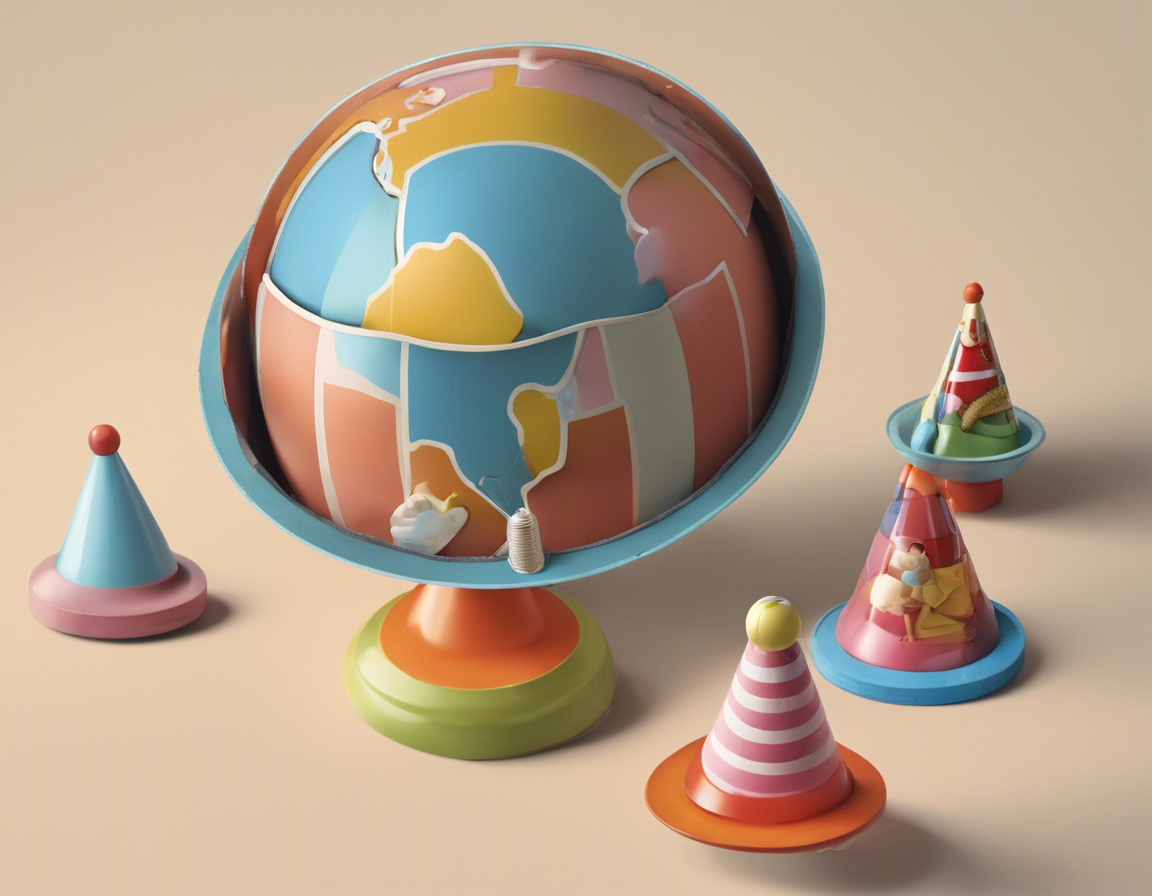Geometry is often seen as a complex and abstract mathematical concept, but when integrated with practical applications such as toy design, it can become both educational and enjoyable for all ages. In this article, we will explore the fascinating combination of a cone on hemisphere toy design, which incorporates basic geometric shapes to create a fun and visually appealing toy. From understanding the properties of a cone and hemisphere to the process of designing and constructing the toy, this article will provide a comprehensive guide for anyone interested in exploring the intersection of geometry and creativity.
Properties of a Cone and Hemisphere
A cone is a three-dimensional geometric shape that features a circular base connected to a single point called the vertex. The surface of a cone is curved, tapering towards the vertex. The height of a cone is the distance from the base to the vertex, and the slant height is the distance along the curved surface from the base to the vertex.
On the other hand, a hemisphere is half of a sphere – a perfectly round geometrical object in three dimensions. A hemisphere has a curved surface and a flat circular base. The radius of the hemisphere is the distance from the center to the curved surface.
Combining a Cone with a Hemisphere
When we combine a cone and a hemisphere in toy design, we can create an interesting and versatile plaything that showcases the unique attributes of both shapes. The cone can serve as the body of the toy, providing a tapered and sleek appearance, while the hemisphere can act as the head or top portion of the toy, offering a round and smooth finish.
Design Process
-
Sketching the Design: Begin by sketching the overall design of the toy, considering the proportions of the cone and hemisphere. Think about the size of the base of the cone, the height of the cone, and the radius of the hemisphere.
-
Calculating Dimensions: Use geometric formulas to calculate the dimensions of the cone and hemisphere based on your desired size. The volume of a cone is given by V = (1/3)πr²h, where r is the radius of the base and h is the height. The volume of a hemisphere is V = (2/3)πr³.
-
Material Selection: Choose appropriate materials for constructing the toy, considering factors such as durability, weight, and safety. For a cone on hemisphere toy, materials like wood, plastic, or clay can work well.
-
Assembly: Cut out the cone and hemisphere shapes from the chosen materials, ensuring precise measurements. Attach the hemisphere to the top of the cone securely, using glue, screws, or other fastening methods.
-
Decoration: Add decorative elements to enhance the visual appeal of the toy. You can paint the cone and hemisphere in different colors, add patterns, or even personalize the toy with designs or stickers.
-
Play Testing: Test the toy to ensure that it functions as intended. Check for stability, balance, and overall playability. Make any necessary adjustments to improve the toy’s performance.
Educational Benefits
Introducing a cone on hemisphere toy to children can offer numerous educational benefits:
- Geometry Awareness: Children can learn about different geometric shapes, their properties, and how they can be combined to create new objects.
- Spatial Skills: Playing with the toy can help develop spatial awareness and visualization skills as children interact with the cone and hemisphere in various ways.
- Hands-On Learning: Constructing the toy can provide a hands-on learning experience, encouraging problem-solving and fine motor skills development.
Frequently Asked Questions (FAQs)
- What is the difference between a cone and a hemisphere?
-
A cone is a three-dimensional shape with a circular base tapering to a point, while a hemisphere is half of a sphere with a curved surface and a flat circular base.
-
How can I calculate the volume of a cone and a hemisphere?
-
The volume of a cone is V = (1/3)πr²h, where r is the radius of the base and h is the height. The volume of a hemisphere is V = (2/3)πr³.
-
What are some ways to decorate a cone on hemisphere toy?
-
You can paint the toy in different colors, add patterns, stickers, or even glue on decorative elements like sequins or beads.
-
Are there safety considerations when designing a toy with sharp edges, such as a cone?
-
It’s important to smooth out any sharp edges on the cone to prevent injuries. Consider using rounded edges or sanding down rough areas.
-
Can the cone on hemisphere toy be used for educational purposes in a classroom setting?
- Yes, the toy can be utilized in geometry lessons to demonstrate the properties of cones and hemispheres, as well as for spatial reasoning activities.
In conclusion, designing a cone on hemisphere toy provides a wonderful opportunity to blend mathematical concepts with creative expression. By exploring the properties of these geometric shapes and engaging in the design and construction process, individuals can appreciate the beauty of geometry in a tangible and enjoyable way. Whether it’s for educational purposes or simply for the joy of play, the cone on hemisphere toy embodies the fusion of learning and fun in a geometrically inspired package.
